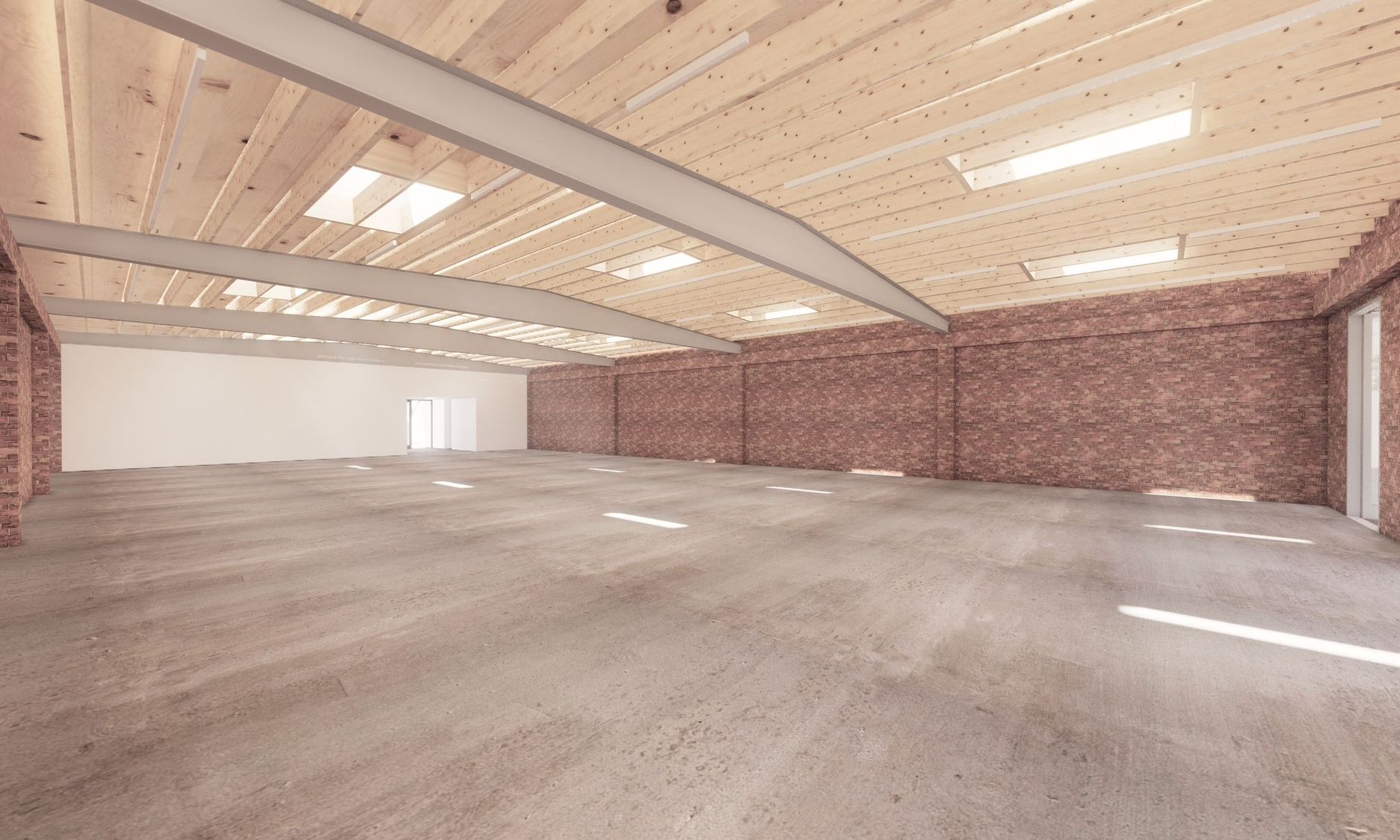Rendering of the Brick's main gallery space, by John Frane of HGA Architects Courtesy of The Brick
After years of being confused with an airport public art programme, the Los Angeles alternative art space known as LAXART is changing its name to the Brick. The name is a reference to the exposed-brick interior walls of its new building, set to open on 16 June, and to the idea that the exhibition space plays a co-operative—or constructive—role in the community.
There are also hints of the brick as a renegade tool or weapon. “I think of Krazy Kat and the brick that the mouse throws at Krazy Kat out of love,” says the Brick’s director Hamza Walker.“Throwing a brick can also be seen as an act of revolution, so there are a lot of rich associations, even if they’re all different.” His team had briefly landed on another name, Index, through a focus-group process, but he says it didn’t have the same punch.
“When you see the building, it’s a no-brainer,” Walker says. As for “LAXART”, he adds, “You had to explain the name, and that’s not a good thing.” He also didn’t like people pronouncing it “lax” as in “relaxed” or “laxative”.
The Brick's director, Hamza Walker Photo by Todd Gray
When the Brick opens in its new location, just a block south of David Zwirner on the growing gallery corridor of Western Avenue, it will have a mural on the façade by the Indigenous and Chicano artists 3B Collective. The subject: the late artist William Pope.L doing his famous crawl piece. Walker describes it as the art-world equivalent of a Kobe Bryant mural. “I was joking and said in order to ingratiate ourselves to Los Angeles, we should do a Kobe mural. Then I stopped and said: Who would our Kobe be?” The Brick’s deputy director Catherine Taft had an answer.
Opening-month events include a two-night performance led by saxophonist Roscoe Mitchell and the week-long Sekula/Stein Garage Sale, in which the personal library and some memorabilia (think eBay finds) of the late artist Allan Sekula and his wife, the art historian Sally Stein, will be offered for sale to the public.
Exhibitions begin 14 July with Gregg Bordowitz: This Is Not A Love Song, featuring a new site-specific concrete poem and video exploring the artist’s Jewish roots, through 24 August. In September, the Brick will show Life on Earth: Art & Ecofeminism, curated by Taft as part of the Getty’s PST Art initiative. The highly anticipated Monuments show that Hamza Walker is co-curating (with the artist Kara Walker and the Museum of Contemporary Art Los Angeles’s senior curator Bennett Simpson) has been postponed yet again, with a new opening date of October 2025 at both venues: the Brick and the Museum of Contemporary Art.
Rendering of the Brick's courtyard, by John Frane of HGA Architects Courtesy of The Brick
Founded in 2005 as an arts incubator by curator Lauri Firstenberg, LAXART had in its first decade both mirrored and contributed to the rise of the contemporary art scene here. It gave early, important shows to artists such as Mark Bradford, Sarah Cain and Glenn Kaino while also kickstarting the careers of curators including Amanda Hunt, Aram Moshayedi and César García-Alvarez.
But the non-profit survived month-to-month and was vulnerable to rent hikes, most recently in its West Hollywood location, a space that Jeffrey Deitch has taken over. Walker, who was named director of LAXART in 2016, closed that space in 2022 to focus on the purchase of the organisation’s new building, a one-time furniture showroom, and its renovation by board member John Frane of HGA Architects. Walker says the process was complicated by seismic issues, as they “had to reinforce the building structurally and re-engineer the roof” to accommodate a series of skylights. At present, he says they have raised $3.2m of a $5m building campaign, a figure that includes one year’s operational costs.
The Brick now has 4,000 sq. ft of exhibition space, not counting the courtyard. This makes it a bit more spacious than some alt-exhibition venues in town like the Mistake Room, but smaller than the Institute of Contemporary Art Los Angeles, which, previously known as the Santa Monica Museum of Art, also had a name change when it expanded and moved to a new location.

